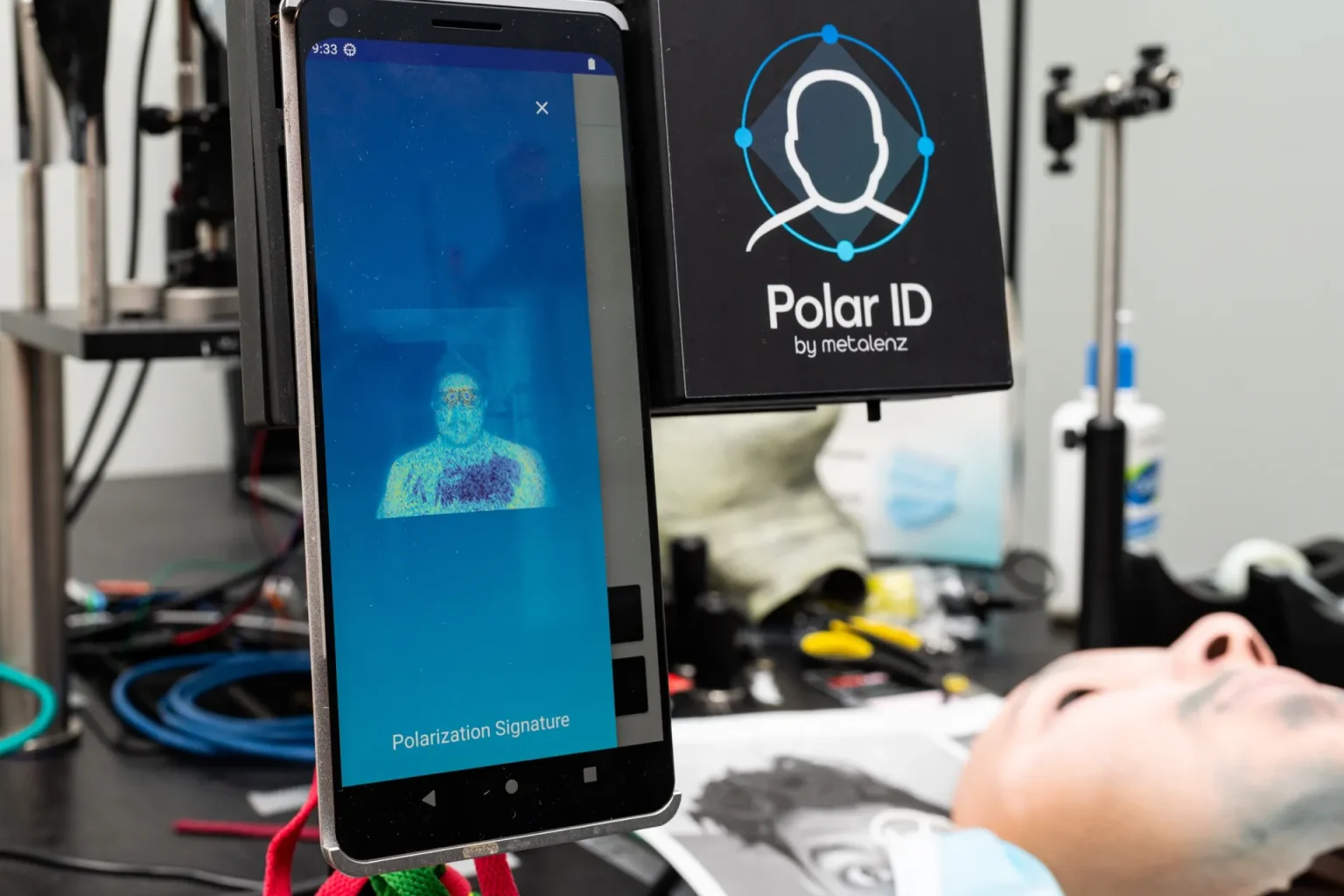A quiet revolution is happening in smartphone security, and it’s coming from a company many people have never heard of: Metalenz. Their new technology, Polar ID, is already being described as the biggest leap in facial recognition since Apple introduced Face ID in 2017.
But unlike Apple’s approach, which relies on expensive structured-light hardware, Polar ID delivers high-level biometric authentication using a tiny metasurface lens and polarized light, a combo that could finally bring secure face unlock back to Android at scale.
To understand why the tech world is buzzing, let’s break down what makes Polar ID different.
1. It Reads the Polarization of Light – Not Just a Regular Selfie
Most Android phones today rely on 2D selfie cameras for face unlock. They work fast, but they’re notoriously easy to trick with photos, masks, or even high-resolution screens. This is exactly why major banking apps don’t trust them for sensitive transactions.
Polar ID changes the rules:
- It uses a meta-optic lens paired with a 940 nm infrared illuminator.
- Instead of just capturing brightness or colour, it measures how light polarizes when it hits real human skin.
- This polarization signature is incredibly difficult to spoof.
That single polarized infrared image is then fused with traditional facial recognition algorithms to determine both identity and liveness. According to Metalenz, Polar ID can detect even the most advanced 3D silicone masks as fake; something most Android front cameras fail at.
This alone is a massive leap forward.
2. It Offers Apple-Level Security Without Apple’s Bulky Hardware
Apple’s Face ID works beautifully, but the hardware behind it, a dot projector, IR camera, flood illuminator and more, is bulky and expensive. That’s why the notch and Dynamic Island still exist years later.
Polar ID takes a different path:
- No dot projector needed.
- No separate 3D depth module.
- Just one compact polarization camera plus IR light.
The result: a smaller, cheaper, and slimmer alternative that phone makers can easily fit into modern bezel-less designs even mid-range Android devices.
This could be the democratization of secure face unlock.
You can Also Read: Anthropic’s Claude Gov Models: Elevating U.S. National Security with Tailored AI Solutions
3. It Works in Darkness, Direct Sunlight – Even with Masks or Glasses
One of the biggest promises of Polar ID is how well it handles real-world conditions:
- Works in complete darkness thanks to infrared imaging.
- Remains accurate in harsh outdoor light, where many depth systems fail.
- Can still detect skin through glasses, masks, and weather gear.
If delivered at scale, Android users might finally get a secure, reliable face unlock experience that rivals or even surpasses Apple’s; without overhauling their phone design.
How Did Android Fall So Far Behind on Face Unlock?
To understand why Polar ID feels like a comeback moment, consider Android’s chaotic history with facial recognition:
- 2017–2020: A few phones notably the Pixel 4 attempted secure 3D face unlock with radar and IR depth sensors. These experiments didn’t last.
- 2020s: Most brands reverted to basic camera-based face unlock. Fast? Yes. Secure? Not really.
- Even Samsung, the Android giant, relies on the fingerprint sensor for serious security operations.
- As devices started storing digital IDs, boarding passes, payment cards, and even government documents, the limitations became obvious.
Android desperately needed its own Face ID moment, but without the cost and bulk of Apple’s approach.
Why Polar ID Might Be the Turning Point
With Metalenz now mass-producing Polar ID modules; and multiple reports hinting at a major Android flagship adopting it by 2027, this innovation may finally close the security gap.
Polar ID is small, cheap, secure, and practical. It merges cutting-edge optics with real-world usability and could become the new standard for Android authentication.
If the early excitement is anything to go by, Android users may soon experience facial recognition that is fast, trustworthy, and hardware-efficient, a combination the ecosystem has been missing for nearly a decade.






